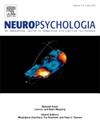预测与不预测:情境约束与真值在否定加工中的作用。
IF 2
3区 心理学
Q3 BEHAVIORAL SCIENCES
引用次数: 0
摘要
在否定加工的研究中,往往存在真值相互作用的极性:假肯定句相对于真肯定句表现出更长的响应时间和更大的N400 erp,而对于否定句,真值的影响通常是相反的。这种相互作用一再与词汇关联、可预测性的变化或在理解否定句期间构建两个后续心理表征的需要有关。在五个ERP实验中,我们采用图片-句子验证范式,研究了否定性、真性和可预测性在句子加工中的相互作用。可预测性是通过改变上下文提供的可选句子延续的数量来操纵的,使其对两个句子极性都相等。对于两种句子极性,在强约束上下文中,真句产生了更小的N400响应,处理器可以形成一个独特的预测,相对于弱约束上下文,不能做出明确的预测。在假句中,语境对句子极性的影响是相反的。此外,真理的影响依赖于可预测性而不是句子极性:肯定句和否定句都显示出真理的影响方向相同,即在强约束情境中,假句子的N400大于真句子,在弱约束情境中,N400的影响相反,尽管这两个极性之间的影响大小差异很明显。此外,我们观察到,在两种情境条件下,在真值和所有五个实验中,否定都具有持久的积极效应,并就否定引起的抑制机制进行了讨论。本文章由计算机程序翻译,如有差异,请以英文原文为准。
To predict or not to predict: The role of context constraint and truth-value in negation processing
Studies on negation processing frequently report a polarity-by-truth interaction: False affirmative sentences usually show longer response times and larger N400 amplitudes compared to true affirmative sentences, whereas for negative sentences the effect of truth-value is typically reversed. This interaction has repeatedly been linked to factors such as lexical associations, predictability, or to the need of constructing two subsequent mental representations during the comprehension of negative sentences. In a series of ERP experiments using a picture-sentence verification paradigm, we investigated how sentence polarity, truth-value and predictability interact during sentence processing. Predictability was manipulated by varying the number of alternative sentence continuations provided by the context, similarly for both sentence polarities. For both affirmative and negative sentences, true sentences elicited reduced N400 amplitudes in strongly constraining contexts—where a specific continuation was highly predictable—compared to weakly constraining contexts, where no clear prediction could be made. For false sentences, the effect of context was reversed for both sentence polarities. Crucially, the effect of Truth was dependent on predictability rather than sentence polarity: Both affirmative and negative sentences showed the same direction of the effect of Truth, namely, larger N400s for false rather than true sentences in the strongly constraining context, and the opposite pattern in the weakly constraining context, although the size of these effects differed across the two polarities. In addition, we observe a long-lasting positivity effect for negation, in both context conditions, for both truth-values and across all five experiments. We interpret this effect as reflecting inhibitory mechanisms recruited during negation processing.
求助全文
通过发布文献求助,成功后即可免费获取论文全文。
去求助
来源期刊

Neuropsychologia
医学-行为科学
CiteScore
5.10
自引率
3.80%
发文量
228
审稿时长
4 months
期刊介绍:
Neuropsychologia is an international interdisciplinary journal devoted to experimental and theoretical contributions that advance understanding of human cognition and behavior from a neuroscience perspective. The journal will consider for publication studies that link brain function with cognitive processes, including attention and awareness, action and motor control, executive functions and cognitive control, memory, language, and emotion and social cognition.
 求助内容:
求助内容: 应助结果提醒方式:
应助结果提醒方式:


